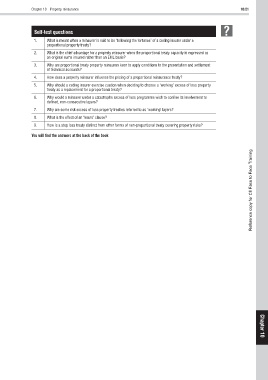Page 289 - M97TB9_2018-19_[low-res]_F2F_Neat2
P. 289
Chapter 10 Property reinsurance 10/21
Self-test questions
1. What is meant when a reinsurer is said to be ‘following the fortunes’ of a ceding insurer under a
proportional property treaty?
2. What is the chief advantage for a property reinsurer when the proportional treaty capacity is expressed as
an original sums insured rather than an EML basis?
3. Why are proportional treaty property reinsurers keen to apply conditions to the presentation and settlement
of technical accounts?
4. How does a property reinsurer influence the pricing of a proportional reinsurance treaty?
5. Why should a ceding insurer exercise caution when deciding to choose a ‘working’ excess of loss property
treaty as a replacement for a proportional treaty?
6. Why would a reinsurer under a catastrophe excess of loss programme wish to confine its involvement to
defined, non-consecutive layers?
7. Why are some risk excess of loss property treaties referred to as ‘working’ layers?
8. What is the effect of an ‘hours’ clause?
9. How is a stop loss treaty distinct from other forms of non-proportional treaty covering property risks?
You will find the answers at the back of the book Reference copy for CII Face to Face Training Chapter
10

